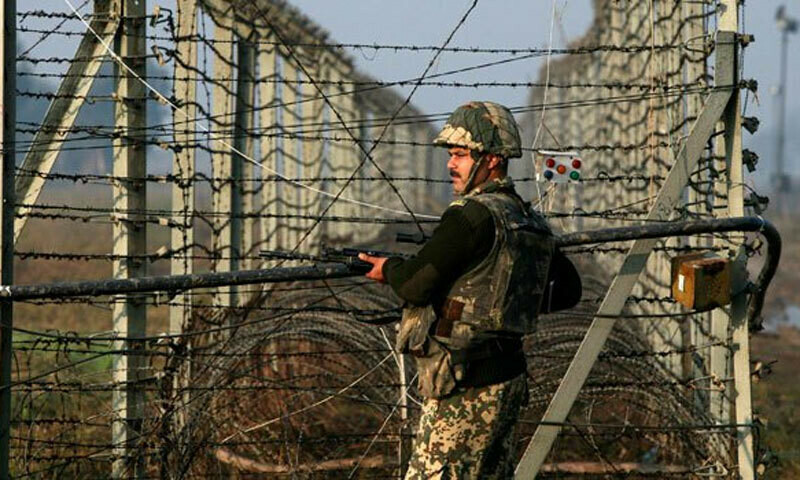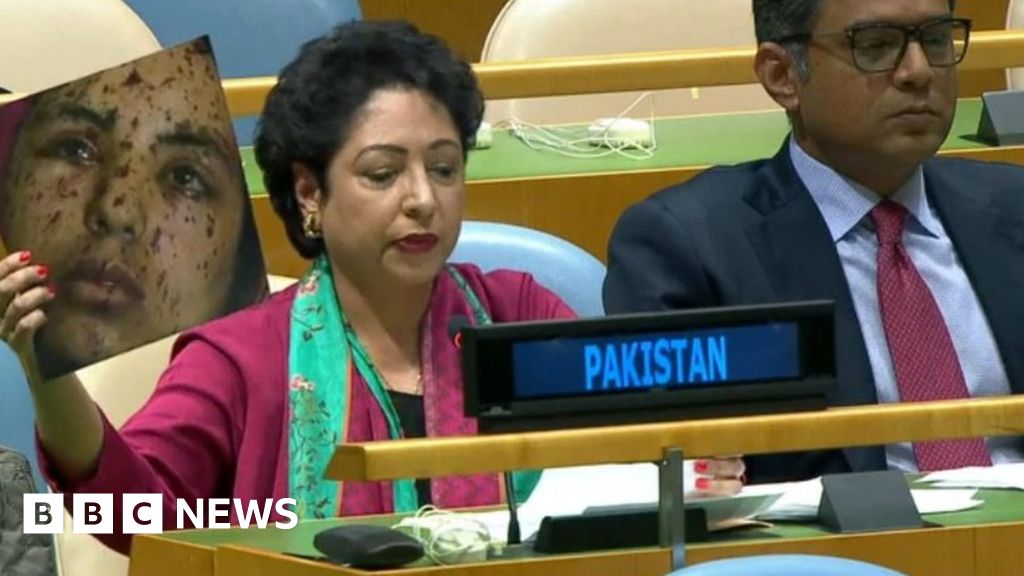ghazi52
PDF THINK TANK: ANALYST

- Joined
- Mar 21, 2007
- Messages
- 104,413
- Reaction score
- 106
- Country
- Location
.,.,
June 24, 2023
Two civilians embraced martyrdom on Saturday while one other was “critically injured” as the Indian Army opened “indiscriminate fire” at a group of shepherds at the Line of Control, the army’s media relations wing said.
In February 2021, both countries had recommitted themselves to the 2003 ceasefire agreement and agreed to address the “core issues” that could undermine peace and stability.
Today, the Inter-Services Public Relations (ISPR) said in a statement, “Today, at 11:55 hours, Indian Army, in a display of its usual inhumane approach towards innocent Kashmiris, opened indiscriminate fire onto a group of shepherds in Sattwal Sector.
“In sequel to Indian Army unprovoked firing today while adopting an inhumane approach towards innocent Kashmiris at Sattwal Sector, one more civilian has embraced shahadat while one remains critically injured. (Total two martyred and one critically injured),” it said in a subsequent statement issued.
The ISPR identified the martyred as Obaid Qayyum, 22, and Muhammad Qasim, 55. “Both shaheeds (martyrs) are residents of village Bara Dari Tetrinote, Tehsil Hajira, District Poonch,’ it added.
The statement further said: “Driven by a newfound geo-political patronage, Indian forces have embarked on a plan to take innocent lives to satiate their false narratives and concocted allegations.
“While a strong protest is being launched with the Indian side, Pakistan reserves the right to respond back in manner of its choosing to protect Kashmiri lives in the LoC,” it added.
The ISPR “reminded” the Indian side to respect the basic human rights of Kashmiris, “particularly their inalienable right to their lands”.
Last month, Indian troops had shot dead a 25-year-old inadvertent crosser from Azad Jammu and Kashmir (AJK).
Earlier on May 15, Parveen Fatima, a 65-year-old widow from the Pandu sector of AJK’s Jhelum valley district, was also mercilessly killed by the Indian army after she had strayed across the LoC while picking some medicinal plants.
The development comes days after the United States and India issued a joint statement, calling on Pakistan to crack down on extremists that target New Delhi.
The statement was issued as Indian Prime Minister Narendra Modi met US President Joe Biden on his visit to the US. It called for action against extremist groups based in Pakistan such as the banned Lashkar-e-Taiba and Jaish-e-Mohammad.
It said: “They (Biden and Modi) strongly condemned cross-border terrorism, the use of terrorist proxies and called on Pakistan to take immediate action to ensure that no territory under its control is used for launching terrorist attacks.”
A day ago, the Foreign Office (FO) had termed the statement “misleading and unwarranted”, saying that the “reference is contrary to diplomatic norms and has political overtones”.
Responding to media queries, FO Spokesperson Mumtaz Zahra Baloch had said, “India, in addition to being a state-sponsor of terrorism, habitually uses terrorism bogey to deflect attention from its brutal repression of Kashmiri people in Indian Illegally Occupied Jammu and Kashmir, and maltreatment of its minorities.”
She had further asserted that the joint statement failed to address the “key sources of tension and instability in the region and to take cognisance of the grave human rights situation in the Indian Illegally Occupied Jammu & Kashmir.’
The Line of Control
In February 2021, both countries had recommitted themselves to the 2003 ceasefire arrangement at the Line of Control and agreed to address the “core issues” that could undermine peace and stability.
The surprise announcement had been made in a joint statement by the militaries of the two countries on a “hotline contact” between their director generals military operations (DGMOs).
Hotline contact is one of the oldest military confidence-building measures between Pakistan and India. The hotline contact was originally established in 1971, but its use followed ups and downs in the relations.
Pakistan and India had in November 2003 agreed to cease fire along the LoC and the Working Boundary. The agreement held for a few years, but regular violations have occurred since 2008.
A sharp spike in truce breaches had been witnessed since 2014 when Prime Minister Narendra Modi came to power in India. In 2020, the Indian troops committed over 3,000 ceasefire violations in which 28 people were martyred.
In February 2019, both countries came close to a significant confrontation when Pakistan Air Force (PAF) had shot down two Indian planes that had violated Pakistani airspace.
One of the Indian pilots was captured by Pakistan, but was later handed over as a gesture of peace.

Two martyred, one injured after Indian forces open fire at shepherds at LoC: ISPR
Iftikhar ShiraziJune 24, 2023
Two civilians embraced martyrdom on Saturday while one other was “critically injured” as the Indian Army opened “indiscriminate fire” at a group of shepherds at the Line of Control, the army’s media relations wing said.
In February 2021, both countries had recommitted themselves to the 2003 ceasefire agreement and agreed to address the “core issues” that could undermine peace and stability.
Today, the Inter-Services Public Relations (ISPR) said in a statement, “Today, at 11:55 hours, Indian Army, in a display of its usual inhumane approach towards innocent Kashmiris, opened indiscriminate fire onto a group of shepherds in Sattwal Sector.
“In sequel to Indian Army unprovoked firing today while adopting an inhumane approach towards innocent Kashmiris at Sattwal Sector, one more civilian has embraced shahadat while one remains critically injured. (Total two martyred and one critically injured),” it said in a subsequent statement issued.
The ISPR identified the martyred as Obaid Qayyum, 22, and Muhammad Qasim, 55. “Both shaheeds (martyrs) are residents of village Bara Dari Tetrinote, Tehsil Hajira, District Poonch,’ it added.
The statement further said: “Driven by a newfound geo-political patronage, Indian forces have embarked on a plan to take innocent lives to satiate their false narratives and concocted allegations.
“While a strong protest is being launched with the Indian side, Pakistan reserves the right to respond back in manner of its choosing to protect Kashmiri lives in the LoC,” it added.
The ISPR “reminded” the Indian side to respect the basic human rights of Kashmiris, “particularly their inalienable right to their lands”.
Last month, Indian troops had shot dead a 25-year-old inadvertent crosser from Azad Jammu and Kashmir (AJK).
Earlier on May 15, Parveen Fatima, a 65-year-old widow from the Pandu sector of AJK’s Jhelum valley district, was also mercilessly killed by the Indian army after she had strayed across the LoC while picking some medicinal plants.
The development comes days after the United States and India issued a joint statement, calling on Pakistan to crack down on extremists that target New Delhi.
The statement was issued as Indian Prime Minister Narendra Modi met US President Joe Biden on his visit to the US. It called for action against extremist groups based in Pakistan such as the banned Lashkar-e-Taiba and Jaish-e-Mohammad.
It said: “They (Biden and Modi) strongly condemned cross-border terrorism, the use of terrorist proxies and called on Pakistan to take immediate action to ensure that no territory under its control is used for launching terrorist attacks.”
A day ago, the Foreign Office (FO) had termed the statement “misleading and unwarranted”, saying that the “reference is contrary to diplomatic norms and has political overtones”.
Responding to media queries, FO Spokesperson Mumtaz Zahra Baloch had said, “India, in addition to being a state-sponsor of terrorism, habitually uses terrorism bogey to deflect attention from its brutal repression of Kashmiri people in Indian Illegally Occupied Jammu and Kashmir, and maltreatment of its minorities.”
She had further asserted that the joint statement failed to address the “key sources of tension and instability in the region and to take cognisance of the grave human rights situation in the Indian Illegally Occupied Jammu & Kashmir.’
The Line of Control
In February 2021, both countries had recommitted themselves to the 2003 ceasefire arrangement at the Line of Control and agreed to address the “core issues” that could undermine peace and stability.
The surprise announcement had been made in a joint statement by the militaries of the two countries on a “hotline contact” between their director generals military operations (DGMOs).
Hotline contact is one of the oldest military confidence-building measures between Pakistan and India. The hotline contact was originally established in 1971, but its use followed ups and downs in the relations.
Pakistan and India had in November 2003 agreed to cease fire along the LoC and the Working Boundary. The agreement held for a few years, but regular violations have occurred since 2008.
A sharp spike in truce breaches had been witnessed since 2014 when Prime Minister Narendra Modi came to power in India. In 2020, the Indian troops committed over 3,000 ceasefire violations in which 28 people were martyred.
In February 2019, both countries came close to a significant confrontation when Pakistan Air Force (PAF) had shot down two Indian planes that had violated Pakistani airspace.
One of the Indian pilots was captured by Pakistan, but was later handed over as a gesture of peace.

Two martyred, one injured after Indian forces open fire at shepherds at LoC: ISPR
Foreign Office summons Indian charge d’ affairs to register Pakistan’s protest, condemn incident, urges India to maintain peace along Line of Control.
www.dawn.com








